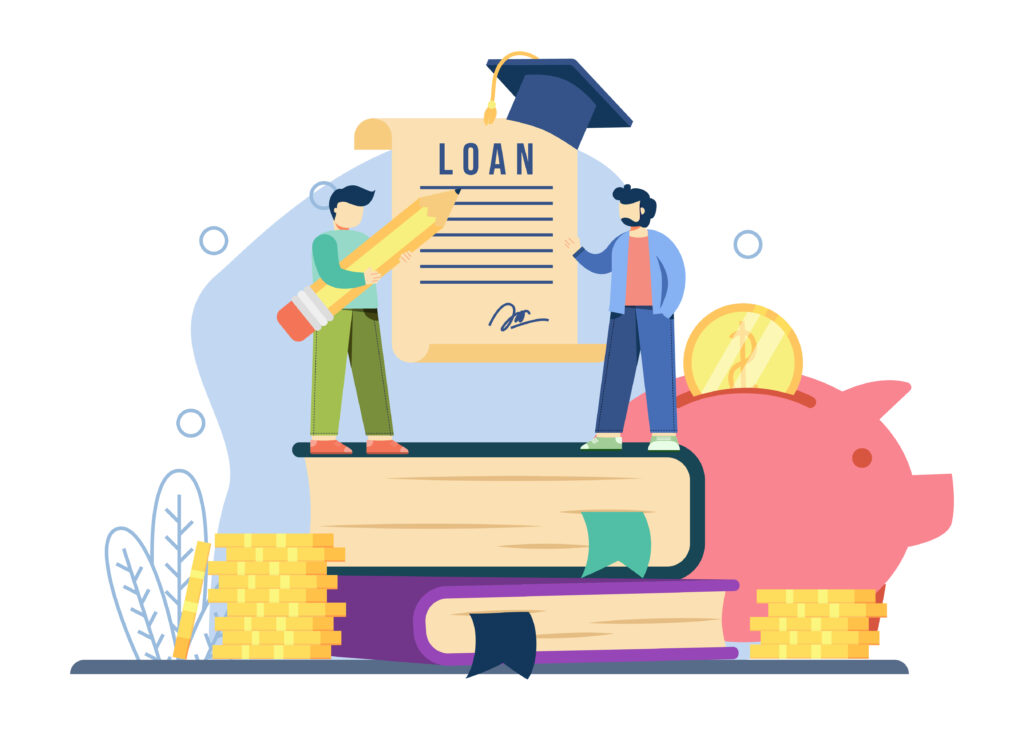
In the pursuit of higher education, the cost of tuition and related expenses can often pose a significant challenge. Student loans have become an integral part of the education financing landscape, allowing aspiring students to achieve their academic dreams. This comprehensive guide aims to demystify student loans and provide you with a clear understanding of the financial aid options available to support your educational journey.
1. The Basics of Student Loans
Student loans are loans specifically designed to cover educational expenses, including tuition, books, housing, and other related costs. They come in different types, each with its terms, interest rates, and repayment options.
2. Federal vs. Private Student Loans
Federal student loans are offered by the government and often come with more flexible repayment terms and lower interest rates. Private student loans, on the other hand, are provided by private lenders and typically have varying interest rates and terms.
3. Types of Federal Student Loans
There are several types of federal student loans, including Direct Subsidized Loans, Direct Unsubsidized Loans, and Direct PLUS Loans. Each type caters to different financial needs and circumstances. Subsidized loans, for example, do not accrue interest while the borrower is in school, while unsubsidized loans do.
4. Understanding Interest Rates
Interest rates play a crucial role in the total cost of your student loan. Federal student loans generally have fixed interest rates, while private loans may have fixed or variable rates. Understanding the interest rates and their implications is essential for long-term financial planning.
5. Repayment Options
Federal student loans offer various repayment options, such as standard repayment, income-driven repayment, and extended repayment. These options provide flexibility based on your financial situation, ensuring that loan repayment is manageable.
6. Grace Period and Deferment
Many student loans come with a grace period after graduation, during which you are not required to make payments. Additionally, deferment options are available for times when you face financial hardship, such as unemployment or further education.
7. Loan Forgiveness and Repayment Assistance Programs
Certain professions and public service roles may qualify for loan forgiveness or repayment assistance programs. These programs alleviate the financial burden of student loans for individuals who commit to serving specific communities or industries.
8. Applying for Student Loans
The process of applying for student loans involves completing the Free Application for Federal Student Aid (FAFSA). This application determines your eligibility for federal financial aid, including grants and loans.
9. Responsible Borrowing
While student loans can be a valuable tool for achieving your educational goals, it’s essential to borrow responsibly. Only borrow what you need, research interest rates, and understand the terms of the loan before signing.
10. Exploring Scholarship and Grant Opportunities
Before turning to loans, explore scholarship and grant opportunities. Scholarships and grants are forms of financial aid that do not need to be repaid, making them an excellent way to minimize the need for loans.
Understanding student loans is an integral part of planning for higher education. By comprehensively exploring the types of loans, interest rates, repayment options, and available financial aid programs, you can make informed decisions that set you up for success in your academic pursuits. Remember that education is an investment, and with the right financial planning, you can achieve your academic aspirations while managing your financial future responsibly.

Unveiling the World of Student Loans: A Holistic Approach to Navigating Financial Aid for Education
Embarking on a journey of higher education is a significant milestone, often accompanied by the question of how to finance it. Student loans are a lifeline for many individuals seeking to achieve their academic aspirations, yet the complexity of loan options can be daunting. This comprehensive guide aims to shed light on the world of student loans, equipping you with knowledge to make well-informed decisions about financing your education.
1. Defining Student Loans
Student loans are funds borrowed to cover educational expenses, such as tuition, fees, room, and board. They are intended to bridge the gap between the cost of education and the resources available.
2. Federal and Private Student Loans
Federal student loans are backed by the government and typically offer more favorable terms, including fixed interest rates and flexible repayment plans. Private student loans, offered by banks or credit unions, may have varying interest rates and repayment options.
3. Types of Federal Student Loans
Federal student loans come in different types, including Direct Subsidized Loans, Direct Unsubsidized Loans, and Direct PLUS Loans. Subsidized loans are based on financial need and have the advantage of interest being paid by the government while you’re in school.
4. Interest Rates and Repayment Terms
Interest rates on student loans can impact the total amount repaid over time. Federal student loans generally offer fixed interest rates, while private loans may have variable rates. Longer repayment terms might result in lower monthly payments but higher overall costs due to accruing interest.
5. Repayment Plans and Flexibility
Federal student loans offer various repayment plans, such as Standard Repayment, Income-Driven Repayment, and Graduated Repayment. Income-Driven plans adjust your monthly payments based on your income and family size, providing greater flexibility.
6. Deferment, Forbearance, and Loan Forgiveness
Deferment and forbearance options allow borrowers to temporarily postpone payments due to financial hardships or enrollment in school. Loan forgiveness programs, available for specific careers or service commitments, can lead to partial or full loan forgiveness.

7. Completing the FAFSA
The Free Application for Federal Student Aid (FAFSA) is a crucial step in securing federal financial aid, including grants and loans. Filling out the FAFSA accurately and promptly is essential for accessing available funds.
8. Responsible Borrowing Practices
While student loans can offer essential financial support, responsible borrowing is paramount. Only borrow what you need and explore all available sources of funding, including scholarships, grants, and part-time work.
9. Financial Literacy and Planning
Developing financial literacy skills is vital for managing student loans effectively. Create a budget, track your expenses, and explore tools that help you understand the impact of your loan choices on your financial future.
10. The Path Ahead: Balancing Dreams and Debt
Education opens doors to opportunities, but managing student loans is an integral part of the journey. By comprehending the intricacies of student loans, exploring repayment options, and embracing responsible borrowing practices, you can strike a balance between your educational dreams and your financial well-being. Remember that your investment in education is an investment in yourself, and with the right knowledge, you can make choices that empower your future.
Conclusion
Understanding student loans is an integral part of planning for higher education. By comprehensively exploring the types of loans, interest rates, repayment options, and available financial aid programs, you can make informed decisions that set you up for success in your academic pursuits. Remember that education is an investment, and with the right financial planning, you can achieve your academic aspirations while managing your financial future responsibly.
























































































































































